Certain breeds of dogs are easy to confuse and this is certainly the case with the Malamute and husky.
Whilst they are both recognized by the American Kennel Club and look like wolves, their personality and purpose are very different.
In this guide, we discuss the differences between the Malamute and the Siberian husky. We then outline the temperament and key character differences between the breeds so you know which one is more suitable for you.
TABLE OF CONTENTS
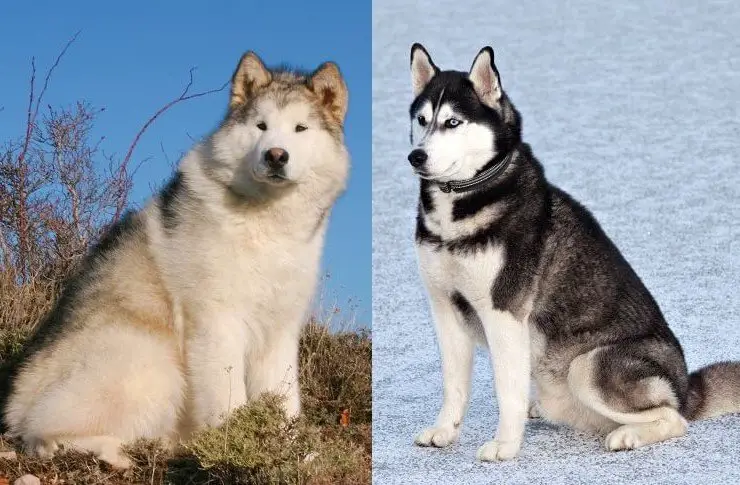
From Adobe Stock
Malamute vs. HuskyAlaskan Malamute vs Siberian Husky Comparison
| Alaskan Malamute | Siberian Husky | |
|---|---|---|
| Size: | 20-25 inches tall | 20-22 inches tall |
| Weight: | 85-100lbs | 35-60lbs |
| Coat: | Long length, Double coat | Medium length, Double coat |
| Color: | Ranges from Black, Light Gray to shades of Red | Red, Black, Gray, Sable, Agouti, and White |
| Lifespan: | 10-12 Years | 10-14 Years |
| Temperament: | Playful, friendly, and confident | Friendly and playful but independent |
| Intelligence: | Intelligent | Very intelligent |
| Socialization: | Can be aggressive with same-sex dogs | A pack dog that is friendly with other dogs |
| Destructive Behavior: | Known for chewing and digging | Will jump fences and try to escape |
| People Skills: | Needs to spend time with their owner and wants to be involved with people | Can live without their owners and doesn’t need much human interaction |
| Initial Purpose: | Used to pull heavy sleds at a slow pace over long distances in the Arctic region | Used to pull light sleds at faster paces over a long distance |
| Energy Levels: | Slightly less than a Husky but still needs daily exercise | Incredibly high energy and needs mental and physical stimulation every day |
Alaskan Malamute vs Siberian Husky Differences
Similarities:
- Extremely friendly with people.
- Both have a double coat.
- Shed fur twice a year (fall/spring).
- High energy levels and needs daily exercise.
- Have high prey drives and can’t be kept with other types of pets.
- Need a strong owner who they respect as the pack leader.
Differences:
- The Malamute enjoys spending time with humans whereas the Husky is much more independent and aloof.
- Malamutes have a short lifespan and tend to have more health problems.
- A Husky will be loyal to their pack whereas a Malamute will be loyal to their owner.
- Malamutes are bigger and heavier dogs whereas Huskys are lighter yet faster dogs.
- The Husky prefers to live with other dogs, whereas a Malamute will be content living with humans.
- Husky tend to live longer and have fewer health problems.
- The Siberian Husky is known for being more intelligent and cunning when compared to a Malamute.
Alaskan Malamute Breed Info
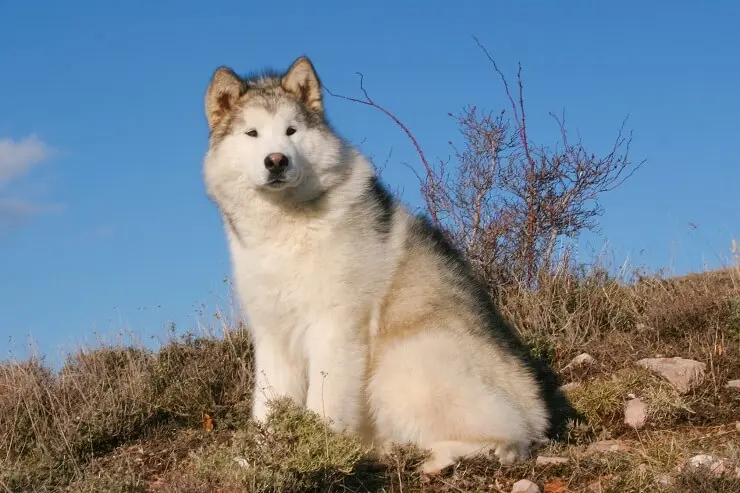
From Adobe Stock
When you first set eyes on an Alaskan Malamute, the first thing that will strike you is their sheer size and presence; it’s easy to confuse them for a wolf.They are incredibly loyal dogs who will happily spend all their time with you. With lots of energy and endurance, they were initially bred to pull heavy sleds long distances.
Because of this high level of energy, you will want to make sure you give them plenty of exercise and mentally stimulating activities otherwise they can start to engage in disruptive behavior (howling and chewing) due to boredom.
Due to their energy levels, they are best suited to people who have an active outdoor lifestyle; think hiking, sledding, and backpacking. Also it should go without saying but they should be kept in colder climates.
They are an incredibly friendly dog (even to strangers) and will maintain their playful and inquisitive puppy nature well into adult life. This friendly nature however doesn’t always extend to other dogs. They can turn dominant and aggressive towards the same sex, so you shouldn’t keep more than one male.
Purchasing an Alaskan Malamute is a big decision, they are a high maintenance dog that requires an experienced owner who has plenty of time to offer them.
Appearance and Size
Malamutes and Huskies are often confused with each other but if you see them stood side by side there is no confusion; the Malamute dwarfs the Husky.
A male Malamute stands at 25 inches tall and weighs between 85-100 pounds. Females are slightly shorter at 23 inches and should weigh around 75 pounds.
You can occasionally find ‘giant’ Malamutes that weigh around 140 pounds, however, due to their size they often suffer from Hip Dysplasia.
Like the Husky, they have a dense double coat. The outer coat (guard coat) is short and coarse. Whereas the undercoat is around 2 inches deep and is oily and wooly; this helps to wick away wetness and keeps them warm.
In terms of color, it can range all the way from black, light gray through to shades of red. Regardless of the color on the top of their coat, their underbelly will mainly be white along with markings on their face, legs, and paws.
They will shed their undercoat twice a year (spring/fall) so during this time you will need to brush them daily; outside of this time brushing twice a week will suffice.
As for their eye color, unlike the Husky which is known for its dazzling blue eyes, Malamutes have brown eyes. Whilst dark brown eyes are preferred for the breed’s standard, the shade of brown can vary to lighter shades of brown and orange eyes.
Temperament
Alaskan Malamutes are playful, friendly, and confident. If you’re looking for a guard dog, this is not the dog for you. They are quick to warmly welcome everyone (including strangers).
Like any other dog, their temperament can be affected by three key factors:
- Genetics (heredity)
- Training
- Socialization
When choosing a pup, look for the middle-of-the-road ones; you don’t want the bully and you don’t want the shy one in the corner.
As they are working dogs, they have never-ending energy and love to run and play. However, this instinct to work and boundless energy can make them difficult to house train.
You need to remember that they are pack animals, so when kept on their own they will need to spend lots of time in their ‘human pack’. This means they will want to get involved in all the family activities.
As they get to know you, this friendliness will grow into an extremely loyal bond and strong connection. However, because of their need for contact, separation anxiety is common with Malamutes so make sure you can offer them plenty of time.
You can reduce the chance of separation anxiety by socializing them at an early age; the more people, experiences, and smells you expose them to, the better.
Whilst they won’t bark that often they are notorious for their howl. They are most likely to howl when they are excited or when they are left alone.
In terms of aggression, the biggest problem you will observe is food aggression; they should not be interrupted when eating.
Price
You should expect to pay around $1500-$2000 for an Alaskan Malamute puppy. However, matured and rescue Malamutes are significantly cheaper.
Lifespan
On average you should expect them to live to around 11 years old, with most living between 10-12 years. As this is a large dog, common health problems include: Hip Dysplasia, von Willebrand Disease, and Chondrodysplasia.
Siberian Husky Breed Info
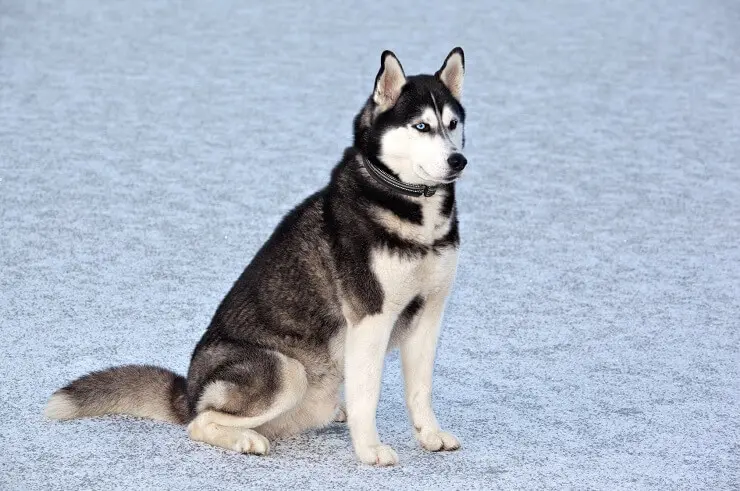
From Adobe Stock
The Siberian Husky was bred by the Chukchi people, to be used as a hunting weapon. They were bred to carry light loads at a reasonable pace over long distances. They didn’t reach the US until 1909 and took until 1930 to become recognized by the American Kennel Club.Whilst incredibly friendly to all humans, they are intelligent, stubborn, and independent. As a pack dog, you will have to earn their respect and trust.
They have seemingly never-ending energy reserves, so make the ideal companion to someone living an active outdoor lifestyle. Without lots of physical and mental exercise, they can become destructive.
If you’re looking for a loyal, obedient dog, the Husky is not for you. They are independent thinkers and are quite content to spend periods of time without you.
Appearance and Size
If you stand a Siberian Husky and Malamute side by side it’s easy to notice the differences; Malamutes are by far the larger dog.
You should expect a male Husky to stand at 22 inches tall and weigh around 50 pounds. Females should be a touch shorter at 20 inches tall and a bit lighter at around 40 pounds.
Just like the Malamute, they have a dense double coat. They will shed this coat twice a year (spring and fall) so they aren’t ideal if anyone in the household is allergic or, if you like to keep your house immaculate and don’t want dog hair on the floor.
During heavy molting, you should brush them every day, and outside of molting, two brushes a week will help to keep their coat healthy.
According to breed standards, their coat can be:
- Black
- Red
- Gray
- Sable
- White
- Agouti
Again, stood next to a Malamute you will notice the Husky’s head is smaller and their ears are tighter and closer together.
They are known for their famous blue eyes, but they can also have brown, green, or mixed colored eyes.
Temperament
If there is one thing to know about Huskies, it is that they are high energy.
Just like Malamutes they are friendly and playful and give affection to everyone they meet; if you’re looking for a guard dog, the Siberian Husky is not for you.
Whilst they are known for this, your dog’s individual temperament can vary depending on:
- Genetics
- Training
- Socialization as a puppy
They are affectionately known as ‘independent thinkers’, meaning they will not be turned into an ultra-obedient dog.
Remember they are working dogs, meaning they have a huge amount of energy and are used to living in packs. This instinct means that it can be challenging to house train them.
Because of their huge energy levels, they require lots of mental and physical stimulation; without this, they can become destructive. Forms of destruction most often occur through digging, jumping, and chewing.
As a pack dog, they are fine with other Huskies; however, they can be ‘prickly’ with other dog breeds.
Price
A puppy Siberian Husky can be purchased for around $400-$1000+ depending on its parental lineage. If you get a matured or rescue Husky the price will be significantly less.
Lifespan
On average, your Siberian Husky should live to around 12, with the vast majority of them living between 10 -14 years. Common health problems include: Hip Dysplasia, Cataracts, and Progressive Retinal Atrophy.
You could get reimbursed for every vet bill from now on!
Frequently Asked Questions about Malamute vs Husky
Malamute Vs Husky Size
Without a doubt, the Malamute is the larger dog. Whilst the Husky is around 22 inches tall, the Malamute is 25 inches. In terms of weight, a Malamute is 85-100 pounds, with a Husky being lighter at around 50 pounds.
Malamute Vs Husky Temperament
Whilst they have a similar temperament, there are a few key differences. Whilst Malamutes needs human affection, a Husky is more than happy to spend time without humans. Also, Huskies have a much more independent mindset.
Summary
Now you should know the difference between a Malamute and a Husky.
They are both loveable fluffy giants, but each breed has its own unique traits making them more or less suited to you depending on your requirements for a pet.
One thing is for sure, they are demanding dogs and require a responsible owner who has the time needed to train and exercise them. Without this high level of exercise, both breeds can turn destructive due to boredom.

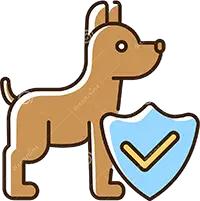
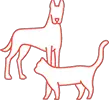
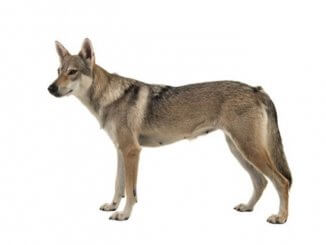
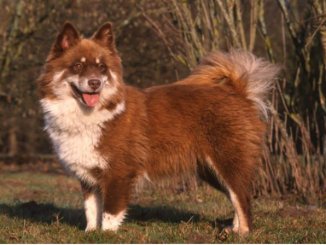
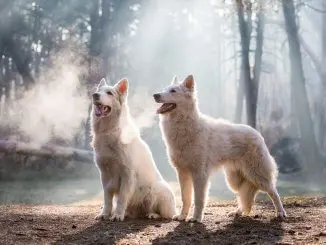
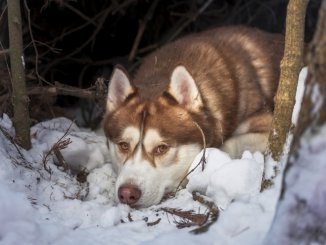
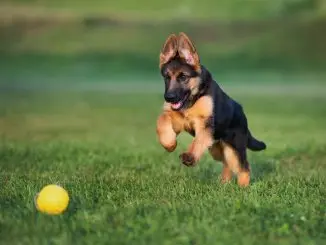
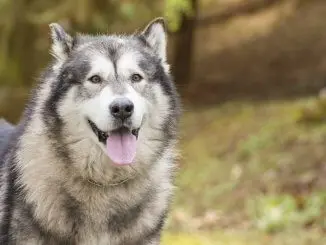
I have a husky malamute mix. Alusky! You are spot on with traits. The malamute in Sawyer makes him larger than husky, smaller than Mal. He weighs 74 pounds. Blue eyes of husky, but body built like Mal. My only issue is he can be “prickly” with other mals. I socialized him very well, but some male dogs freak him out. With people he is a love. Lots and lots and lots of exercise is key above all else. Never chewed, dug or separation issues.
Exactly the same as mine
I have a Siberian Husky and he is amazing. Lovable,loyal and protective. He is decently well behaved and full of love and life . Wouldnt trade him for anything.
I have my 5th Husky who was my first puppy. She is very loyal but also loves playing with other dogs. She does prefer Siberian male huskies. She is very smart and was very easy to train. She stays in the front yard if I am with her but would leave if I was not there. I fenced the back yard for her and installed a dog door. Love her and would never have any other breed.
I have a 2-year old Malamute “puppy”. And, yes, he is very loyal … he follows me wherever I go.
My malamute is 2 1/2 he’s 150lbs he loves everybody and everybody loves him! He is great with all my grandkids.
I have three huskies and they are wonderful! My husband, who was never fond of dogs, absolutely loves these dogs. We have a good sized fenced in yard for them and a dog door so that they can go out and come in as they please. Lots of people who’ve seen my dogs say they want to get one. The first thing I tell them is that they better a really good vacuum too as well as a mop and bucket because there will definitely be frequent cleaning. Despite that, I wouldn’t want any other breed of dog. Mine are sweet, snuggly, and hilariously funny.
Our family had a malamute when I was younger and it was an awesome dog. There are always outliers and the statement about not being able to have other pets may be the norm but it wasn’t in our case. We had several different cats while our dog was alive and she loved all of them. She would play with them, give them baths, in the winter the cats would nestle up to and sleep with her and she protected them them from other dogs
If I ever move to a place the is good for dogs I’ll be getting another one.
Forgot to mention she looked more like a wolf than a dog and would howl at the moon. She initially scared a lot of people but was in reality a big baby and loved people.
My beautiful Kecibelle was malemute with some golden retriever! But she was malemute in appearence color, temperment, personality and devotion to family..and a comic! She had a softness and gentleness that was there from her golden retriever genes. My baby for 11 years..I miss her everyday!
We have a Husky that my husband found running loose where he works. We had her DNA tested and she is 100% Siberian Husky. She must have been an outside dog. She adjusted quickly to the inside. She does NOT like to be brushed. She jumps up and pushes you away with both front paws. Very stubborn. She is not mean at all. Just doesn’t like to be brushed. She plays with the cat and boy oh boy does she love her “daddy”. Great dog